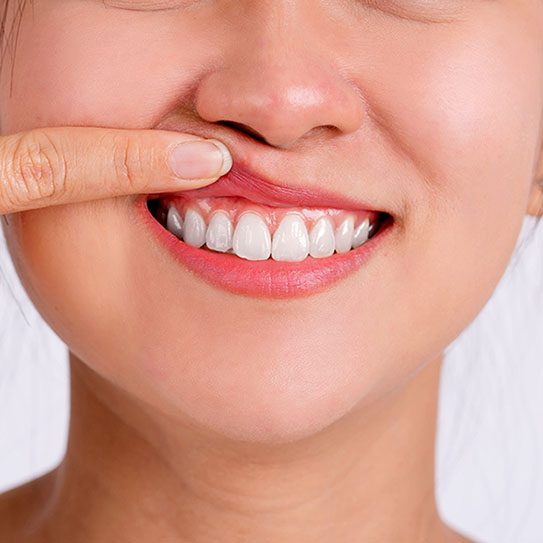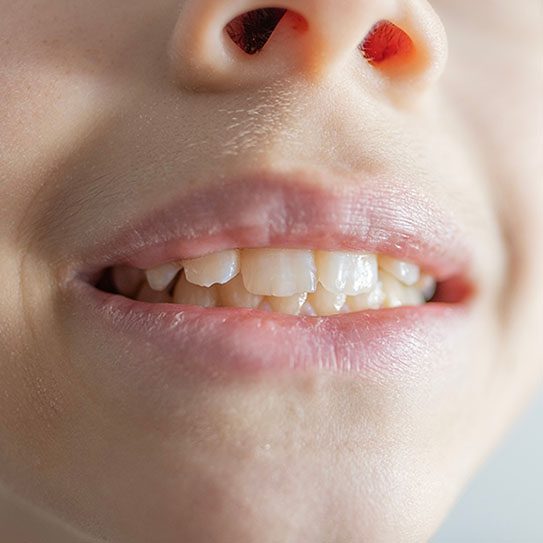Healthy Gums Happy Life: Your Guide to Gum Disease Treatment That Lasts
Gum health rarely gets the attention it deserves, yet it’s one of the most critical factors in maintaining not just your smile, but your overall well-being. While many people focus exclusively on preventing cavities, healthy gums serve as the foundation that keeps your teeth secure and your mouth functioning properly.
Gum disease affects nearly half of all adults over 30, making it one of the most common health conditions worldwide. The troubling reality is that this condition often progresses silently, causing irreversible damage before symptoms become obvious. However, there’s encouraging news: modern gum disease treatment are highly effective, and with the right approach, you can restore and maintain healthy gums for life.
Understanding how to recognize early warning signs, access proper treatment, and maintain long-term gum health can transform both your oral health and your quality of life. This comprehensive guide will walk you through everything you need to know about protecting your gums and choosing treatments that deliver lasting results.
Spotting the Early Signs of Gum Disease
Bleeding and Swelling: Red Flags You Shouldn’t Ignore
Healthy gums should never bleed during routine brushing or flossing. When you notice pink on your toothbrush or blood in the sink, your gums are signaling the presence of inflammation and bacterial infection. This bleeding often accompanies swelling, where gums appear puffy and feel tender to the touch. Many people dismiss these symptoms as normal or temporary, but they represent the early stage of gum disease called gingivitis.
The Link to Bad Breath
Persistent bad breath, or halitosis, often stems from bacterial overgrowth in infected gum tissue. Unlike temporary bad breath from certain foods, chronic halitosis doesn’t improve with minting gum or mouthwash. This occurs because bacteria trapped in gum pockets release sulfur compounds that create unpleasant odors.
Silent Progression: When Symptoms Go Unnoticed
Gum disease can advance significantly without causing obvious pain or discomfort. Many patients are surprised to learn they have moderate to severe gum disease during routine dental visits, despite feeling no symptoms. This silent progression occurs because the infection develops gradually, and the body adapts to chronic inflammation.

Why Gum Health Affects More Than Just Your Smile
Systemic Health Risks
Research has established clear connections between gum disease and serious health conditions throughout the body. The bacteria that cause gum infections can enter the bloodstream, contributing to inflammation in other organs and systems. Studies link untreated gum disease to increased risk of heart disease, stroke, diabetes complications, and respiratory infections.
Confidence and Social Impact
Healthy gums frame your smile and support facial structure. When gums recede or become inflamed, they can make teeth appear longer, create gaps, or cause an uneven smile line. These changes often affect how people feel about their appearance and can impact their willingness to smile, laugh, or engage socially. Fresh breath and a healthy-looking smile boost confidence in both personal and professional interactions.
Functional Stability
Your gums and the underlying bone structure serve as the anchor system for your teeth. When gum disease progresses, it destroys this support system, causing teeth to become loose or shift position. Advanced gum disease is the leading cause of tooth loss in adults, often requiring expensive replacement options like implants or bridges. Maintaining healthy gums preserves your natural teeth and their proper alignment, supporting comfortable chewing and clear speech throughout your life.
Professional Gum Disease Treatments Explained
Scaling and Root Planing: Deep Cleaning Excellence
This non-surgical treatment removes plaque and tartar deposits from below the gumline, where regular brushing and flossing cannot reach. During scaling, your dental professional uses specialized instruments to carefully clean each tooth surface and root area. Root planing smooths rough spots on tooth roots, making it harder for bacteria to reattach and allowing gums to heal properly.
Laser Therapy: Precision Treatment with Minimal Discomfort
Modern laser technology offers a minimally invasive approach to treating gum disease. Lasers can precisely target infected tissue while leaving healthy tissue undisturbed. This technique reduces bleeding, swelling, and discomfort compared to traditional surgical methods. Laser therapy also stimulates healing and can be combined with other treatments for enhanced results.
Surgical Options for Advanced Cases
When gum disease has caused significant bone loss or deep pocket formation, surgical intervention may be necessary to save affected teeth. Procedures like flap surgery allow direct access to clean infected areas and reshape damaged tissues. Bone grafting and guided tissue regeneration techniques can help rebuild lost support structures around teeth.
Home Care That Supports Professional Treatment
Brushing and Flossing Techniques That Actually Protect Gums
Effective home care goes beyond simply brushing twice daily. Using a soft-bristled toothbrush with gentle, circular motions helps remove plaque without irritating gums. Electric toothbrushes with pressure sensors can help prevent overzealous brushing that damages gum tissue. Proper flossing technique involves gently sliding the floss between teeth and curving it around each tooth to clean below the gumline.
Antibacterial Rinses and Their Role
Therapeutic mouth rinses containing antimicrobial ingredients can reduce bacterial levels and inflammation between professional cleanings. These rinses reach areas that brushing and flossing might miss, providing additional protection against gum disease progression. Choose rinses specifically formulated for gum health rather than just cosmetic freshening.
Consistency Delivers Results
Daily oral hygiene habits have far more impact than occasional intensive cleaning sessions. Bacteria reproduce rapidly, so consistent removal prevents the buildup that leads to gum inflammation and infection. Creating a sustainable routine that fits your lifestyle increases the likelihood of maintaining healthy habits long-term.

Lifestyle Choices That Influence Gum Health
Nutrition’s Role in Gum Health
Your diet directly affects your body’s ability to fight infection and heal damaged tissues. Foods rich in vitamin C, like citrus fruits and leafy greens, support collagen production essential for healthy gums. Omega-3 fatty acids found in fish help reduce inflammation throughout the body, including in gum tissue. Conversely, sugary and starchy foods feed harmful bacteria that cause gum disease.
How Smoking and Alcohol Compromise Gum Health
Tobacco use significantly increases gum disease risk and interferes with healing after treatment. Smoking reduces blood flow to gum tissue, impairing the immune response needed to fight infection. It also masks early symptoms of gum disease, allowing the condition to progress undetected. Excessive alcohol consumption can weaken immune function and contribute to dry mouth, which reduces the natural cleansing action of saliva.
The Stress Connection
Chronic stress weakens immune function and can lead to habits like teeth grinding or neglecting oral hygiene. High stress levels also increase inflammation throughout the body, potentially worsening existing gum disease. Managing stress through healthy outlets like exercise, adequate sleep, and relaxation techniques supports your body’s ability to maintain healthy gums and respond to treatment.
Preventing Gum Disease Before It Starts
Regular Checkups: Your First Line of Defense
Professional dental examinations can detect gum disease in its earliest stages, when treatment is simplest and most effective. During these visits, your dental team measures gum pocket depths, checks for bleeding, and identifies areas of concern before they become problematic. Most adults benefit from checkups every six months, though those with risk factors for gum disease may need more frequent monitoring.
Professional Cleanings Remove What Home Care Cannot
Even excellent home care cannot remove all plaque and tartar buildup over time. Professional cleanings access areas that are difficult to reach at home and use specialized tools to remove hardened deposits that regular brushing cannot eliminate. These cleanings also include polishing that removes surface stains and creates smoother tooth surfaces that resist future plaque accumulation.
Education Empowers Prevention
Understanding your individual risk factors and learning proper techniques for home care puts you in control of your gum health. Your dental team can provide personalized guidance based on your specific needs and challenges. Knowledge about early warning signs helps you seek treatment promptly, preventing minor issues from becoming major problems.
Choosing the Right Gum Disease Specialist
Expertise Makes the Difference
Successful gum disease treatment service requires specialized knowledge and experience. Board-certified periodontists have additional training specifically in diagnosing and treating gum disease, while many general dentists also develop excellent skills in this area through continuing education and practice. Look for providers who stay current with the latest treatment techniques and technologies.
Modern Technology Enhances Treatment Outcomes
Practices that invest in advanced diagnostic tools and treatment technologies often achieve better results with greater patient comfort. Digital X-rays, intraoral cameras, and laser therapy equipment represent commitments to providing high-quality care.
Patient-Centered Care Approach
Choose a dental team that prioritizes your comfort, addresses your concerns, and involves you in treatment decisions. Effective communication about your condition, treatment options, and expected outcomes helps you make informed choices about your care.

Pinecrest Dental: Your Partner for Lifelong Gum Health
Comprehensive Care
From simple preventive cleanings to advanced gum disease treatments, we offer the full spectrum of care under one roof. Whether you’re maintaining healthy gums or addressing stubborn issues, we have you covered.
Gentle Expertise
We understand that gum treatments can sound intimidating, but with our compassionate approach, there’s no need to worry. Our skilled team uses modern techniques to restore gum health while keeping every visit as comfortable as possible.
Commitment to Results
Healthy gums don’t just happen overnight—they require consistent care. That’s why we focus on long-term support, offering personalized guidance and ongoing checkups to protect your smile for years to come.
At Pinecrest Dental, your gums—and your smile—are always in good hands. Because lifelong gum health isn’t just our job, it’s our promise.
Your Path to Lasting Gum Health Starts Today
Gum disease treatment represents far more than preserving your smile—it’s an investment in your overall health, confidence, and quality of life. The connection between gum health and systemic wellness makes addressing gum disease a priority for anyone committed to long-term health.
Successful treatment requires combining professional expertise with consistent home care and healthy lifestyle choices. This comprehensive approach not only treats existing gum disease but also prevents future problems, protecting your investment in treatment.
Don’t wait for symptoms to worsen or hope the problem will resolve on its own. Early intervention is always more comfortable, less expensive, and more successful than treating advanced disease. Schedule your consultation with Pinecrest Dental today and take the first step toward the healthy gums and confident smile you deserve.
Dr. Tyler Williams: Pinecrest Dental Functional Dentistry, Implants and Biomimetic Bonding
https://www.google.com/maps?cid=17306132237136820639
+18012669914
1464 E Whitestone Dr Suite 1, Cottonwood Heights, UT 84121, United States
pinecrestdds.com
